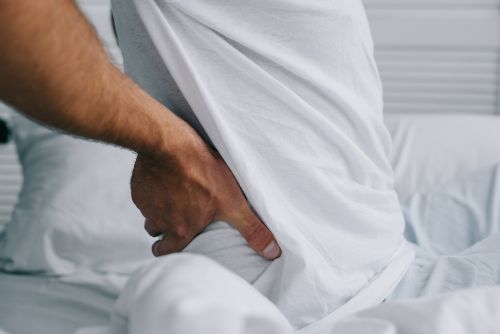
If you did something to hurt your back you are now officially like 30%-40% of the U.S. population with low back pain and 15%-20% with neck pain. This may have been the first time you hurt your back. On the other hand, you might be like the approximately 60% of people who had a prior episode of back pain resolve, only to hurt themselves again. Now that you’re in the club, what should you do?
- Many episodes of back pain are self-limiting. Unfortunately the only way to know is to wait and see. If your pain is tolerable, give it a couple of weeks and see if you get better.
- In the meantime, don’t engage in strenuous activity. If something hurts your back don’t do it.
- Non-steroidal anti-inflammatory medications, like Naprosyn or Ibuprophen (advil) are very effective and available over the counter.
- Adjust your habits to accommodate your pain. If sitting hurts your back, stand up every 10 or 15 minutes or work from a tall platform like a counter.
- If working on a computer hurts your neck, use an adjustable monitor or place books under the monitor stand so that you don’t have to look down.
- If your neck hurts, make sure it’s in a neutral position when you sleep. The ears should lie over the shoulders and the neck should not be kinked up, down, left or right. Adjust your pillow size accordingly.
- If your back hurts, sleep on your side with a pillow between your knees or sleep on your back with a pillow under your knees.
- Consider shoes that have a bit of an arch. Elevating your heels slightly relaxes the hamstring tendons which in turn takes strain off of the pelvis which in turn helps maintain the normal curve of the low back. Swedish clogs are excellent at this but you have to consider practicality.
- If your pain is a result of an accident consider seeing a physician or spine specialist early. It’s important to document injuries and start early treatment.
- If your pain is keeping you from doing your work, necessary activities of daily living or leisure activities it may be a sign that your pain is a harbinger of a significant injury. See your doctor.
- If your pain is severe think about seeing a doctor early.
- If you are getting worse instead of better you should see your doctor.
- If there is leg or arm pain it is a sign of nerve irritation. If it’s severe or worsening see your doctor.
- If there is arm, hand, leg or foot weakness or clumsiness you should see your physician.
- Other associated symptoms such as fever, chills, weight loss, incontinence and unsteadiness warrant a visit to your physician or the emergency room.

